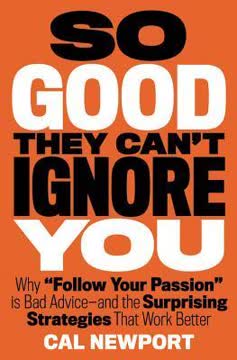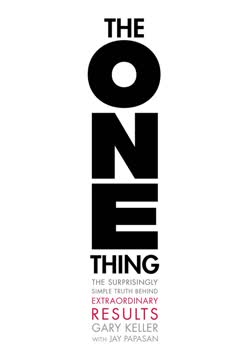Key Takeaways
1. Your brain is always active: Learn to direct it purposefully
"Most people are prisoners of their own brains. It's as if they are chained to the last seat of the bus and someone else is driving. I want you to learn how to drive your own bus."
Take control of your mind. Your brain is constantly active, generating thoughts and experiences even when you're not consciously directing it. This automatic activity can lead to unproductive or negative patterns of thinking.
Harness your brain's power. By learning to consciously direct your thoughts, you can:
- Create more positive experiences
- Reduce negative rumination
- Improve problem-solving abilities
- Enhance creativity and productivity
Practical steps:
- Practice mindfulness to become aware of your thought patterns
- Actively challenge and redirect negative thoughts
- Visualize positive outcomes and experiences
- Set clear goals and focus your mental energy on achieving them
2. Submodalities: The building blocks of mental experiences
"Submodalities are literally the ways that our brains sort and code our experience."
Understanding submodalities. Submodalities are the specific sensory qualities of our internal representations. They are the building blocks of how we experience thoughts, memories, and imagined scenarios in our minds.
Key visual submodalities:
- Brightness
- Size
- Distance
- Color/black and white
- Focus/clarity
- Movement (still or movie)
Key auditory submodalities:
- Volume
- Tone
- Tempo
- Location of sound
Practical applications: By manipulating submodalities, you can:
- Change the emotional impact of memories
- Enhance motivation
- Reduce the power of phobias or negative associations
- Improve learning and recall
3. Changing perspective transforms understanding and behavior
"Are you still sure you were right?"
The power of perspective. How we view a situation dramatically affects our understanding, emotional response, and behavior. By consciously changing our perspective, we can gain new insights and change our reactions.
Techniques for changing perspective:
- Mentally step into another person's shoes
- View the situation from a distance (dissociation)
- Imagine the event from different physical viewpoints (above, below, etc.)
- Consider how the situation might look in a different time frame (e.g., "In 100 years, who will know the difference?")
Benefits:
- Improved empathy and understanding in relationships
- Reduced emotional reactivity
- Enhanced problem-solving abilities
- Greater flexibility in thinking and behavior
4. Motivation strategies: Move towards pleasure, not away from pain
"Most people motivate themselves by thinking about how bad they will feel if they don't do something, and then they move away from that bad feeling."
Positive vs. negative motivation. Many people use the threat of negative consequences to motivate themselves. However, this approach often leads to stress, anxiety, and procrastination.
Positive motivation strategy:
- Visualize the desired outcome
- Focus on the positive feelings associated with achievement
- Break the goal into smaller, manageable steps
- Celebrate progress along the way
Benefits of positive motivation:
- Increased enthusiasm and energy
- Improved persistence in the face of obstacles
- Enhanced creativity and problem-solving
- Greater overall satisfaction and well-being
5. Confusion is the doorway to new understanding
"Confusion is an opportunity to rearrange experience and organize it in a different way than you normally would."
Embrace confusion. Rather than viewing confusion as a negative state, recognize it as a sign that you're on the verge of learning something new. It indicates that your current mental models are being challenged and restructured.
Steps to leverage confusion:
- Acknowledge the confusion without judgment
- Identify what specific aspects are confusing
- Seek out new information or perspectives
- Experiment with different ways of organizing the information
- Allow time for integration and reflection
Benefits:
- Accelerated learning
- Enhanced creativity and innovation
- Greater mental flexibility
- Improved problem-solving skills
6. Beliefs shape behavior: Change beliefs to change actions
"If you accept the idea that phobias can only be bad, that possibility would never occur to you. You can make pleasant responses just as strong and dependable as phobias."
The power of beliefs. Our beliefs act as filters through which we interpret the world and determine our actions. By changing our beliefs, we can dramatically alter our behavior and experiences.
Belief change process:
- Identify the limiting belief
- Determine how the belief is represented internally (submodalities)
- Create a new, empowering belief
- Use submodality shifts to weaken the old belief and strengthen the new one
Key considerations:
- Ensure the new belief is stated positively and as a process (e.g., "I can learn and improve" rather than "I am perfect")
- Check for potential negative consequences of the new belief
- Reinforce the new belief through consistent action and evidence-gathering
7. The Swish Pattern: A powerful technique for behavioral change
"The swish pattern directionalizes the brain."
Understanding the Swish. The Swish Pattern is a powerful NLP technique for changing unwanted behaviors or responses. It works by creating a compelling internal direction for your mind to follow.
Basic Swish steps:
- Identify the unwanted behavior and its visual trigger
- Create a compelling image of yourself without the problem
- "Swish" the problem image into the desired self-image
- Repeat the process several times, increasing speed
Key elements:
- Use powerful submodalities (e.g., size, brightness, distance)
- Ensure the desired self-image is motivating and achievable
- Practice the Swish quickly to leverage the brain's natural learning speed
Applications: The Swish can be used for various issues, including:
- Breaking bad habits
- Overcoming phobias
- Enhancing self-confidence
- Improving motivation
8. Learning is not about content, but about process
"Most studies of the learning process have been 'objective.' What NLP does is to explore the subjective experience of the processes by which people learn things."
Focus on the how, not just the what. Traditional education often emphasizes content knowledge, but understanding the process of learning is equally crucial. By mastering effective learning strategies, you can acquire new skills and knowledge more efficiently.
Key learning processes:
- Visualization techniques
- Memory strategies (e.g., chunking, association)
- Mind mapping
- Active recall and spaced repetition
- Teaching others
Benefits of process-focused learning:
- Improved retention and recall
- Enhanced ability to apply knowledge in new contexts
- Increased learning speed and efficiency
- Greater adaptability to different subjects and skills
9. Memory techniques: Organize information for easy recall
"If you study people who have phenomenal memories, you find out that they do some really interesting things."
Effective memory strategies. Memory isn't just about raw storage capacity; it's about organizing information in ways that make it easy to recall when needed.
Key memory techniques:
- Visualization: Create vivid mental images
- Association: Link new information to existing knowledge
- Chunking: Group related pieces of information
- Mnemonic devices: Use acronyms, rhymes, or stories
- Mind palaces: Organize information spatially in your mind
Practical tips:
- Use multiple senses when encoding memories
- Create unique and distinctive associations
- Review and reinforce memories at spaced intervals
- Apply the information practically to strengthen recall
10. Reframe "learning disabilities" as teaching opportunities
"I never liked the idea of children being 'educationally handicapped,' because I never thought that reading was primarily genetic."
Challenge assumptions about learning. Rather than labeling students with "learning disabilities," focus on finding effective teaching methods that work for each individual's unique learning style.
Strategies for addressing learning challenges:
- Identify the student's preferred learning modalities (visual, auditory, kinesthetic)
- Break down complex tasks into manageable steps
- Use multi-sensory teaching approaches
- Leverage the student's strengths and interests
- Provide frequent feedback and encouragement
Benefits of this approach:
- Increased student confidence and motivation
- Improved learning outcomes
- Reduced stigma and negative self-perception
- Enhanced problem-solving skills for both teachers and students
Last updated:
FAQ
What's "Using Your Brain--For a Change" about?
- Overview: "Using Your Brain--For a Change" by Richard Bandler is a guide to understanding and utilizing Neuro-Linguistic Programming (NLP) to improve personal effectiveness and change unwanted behaviors.
- Focus on Submodalities: The book emphasizes the concept of submodalities, which are the finer distinctions within each sensory modality (visual, auditory, kinesthetic) that influence our experiences and responses.
- Practical Techniques: It provides practical techniques for altering these submodalities to change how we think and feel about past experiences, phobias, and habits.
- Empowerment: The book aims to empower readers to take control of their mental processes and direct their brains toward more desirable outcomes.
Why should I read "Using Your Brain--For a Change"?
- Self-Improvement: The book offers tools for personal development, helping you change unwanted behaviors and enhance your mental well-being.
- Practical Applications: It provides actionable techniques that can be applied to everyday situations, such as overcoming phobias, improving motivation, and enhancing learning.
- Understanding NLP: It serves as an introduction to Neuro-Linguistic Programming, a powerful approach to communication and personal change.
- Empowerment: Reading this book can empower you to take control of your mental processes and improve your life.
What are the key takeaways of "Using Your Brain--For a Change"?
- Submodalities Matter: Understanding and altering submodalities can change your emotional responses and behaviors.
- Association and Dissociation: These are powerful tools for managing emotions and changing how you perceive experiences.
- Belief Change: The book provides a method for changing limiting beliefs into empowering ones.
- Motivation Strategies: It explores different ways people motivate themselves and how to adopt more effective strategies.
How does Richard Bandler define submodalities in the book?
- Finer Distinctions: Submodalities are the finer distinctions within each sensory modality, such as brightness, size, and color in the visual system.
- Impact on Experience: These distinctions significantly impact how we experience and respond to the world.
- Changeable Elements: By changing submodalities, you can alter your emotional responses and behaviors.
- Examples Provided: The book provides numerous examples and exercises to help readers understand and manipulate submodalities.
What is the Swish Pattern in "Using Your Brain--For a Change"?
- Behavioral Change Technique: The Swish Pattern is a technique for changing unwanted habits by redirecting the brain's automatic responses.
- Visual Imagery: It involves creating a vivid image of the unwanted behavior and a separate image of the desired outcome.
- Rapid Transition: The technique uses a rapid transition between these images to reprogram the brain's response.
- Generative Change: It sets a direction for personal growth and change, rather than just eliminating a behavior.
How does the book address phobias?
- Phobia Cure: The book describes a quick and effective method for curing phobias using dissociation and submodality changes.
- Dissociation Technique: It involves viewing the phobic experience from a dissociated perspective to reduce emotional intensity.
- Rapid Results: The method is designed to produce rapid results, often within minutes.
- Practical Examples: The book provides practical examples and case studies of phobia cures.
What are some best quotes from "Using Your Brain--For a Change" and what do they mean?
- "Brains don't learn slowly, they learn fast." This emphasizes the book's focus on rapid change techniques.
- "People aren't broken; they work perfectly!" This quote reflects the belief that behaviors are learned and can be unlearned or changed.
- "Certainty probably impedes human progress more than any other state of mind." It highlights the importance of remaining open to new possibilities and learning.
- "Everything a human being can do is an achievement." This underscores the book's positive view of human potential and the ability to change.
How does Richard Bandler suggest changing limiting beliefs?
- Identify Belief and Doubt: First, identify a limiting belief and compare it to something you doubt.
- Contrastive Analysis: Analyze the differences in submodalities between belief and doubt.
- Submodality Shift: Change the submodalities of the limiting belief to match those of doubt.
- Install New Belief: Replace the old belief with a new, empowering belief using the same submodality changes.
What is the role of association and dissociation in the book?
- Emotional Management: Association involves reliving an experience, while dissociation involves viewing it from a distance, both affecting emotional responses.
- Phobia Treatment: Dissociation is used to reduce the emotional intensity of phobic experiences.
- Memory Enhancement: Associating with positive memories can enhance their emotional impact, while dissociating from negative ones can reduce their impact.
- Behavioral Change: These techniques are used throughout the book to facilitate various behavioral changes.
How does "Using Your Brain--For a Change" address motivation?
- Motivation Strategies: The book explores different strategies people use to motivate themselves, such as moving toward pleasure or away from pain.
- Positive Motivation: It encourages using positive feelings to motivate actions rather than relying on anxiety or fear.
- Understanding Personal Strategies: Readers are guided to understand their own motivation strategies and how to improve them.
- Practical Exercises: The book includes exercises to help readers identify and change their motivation strategies.
What does Richard Bandler say about learning disabilities?
- Teaching Dysfunction: Bandler suggests that learning disabilities are often a result of teaching dysfunction rather than inherent student limitations.
- Visual Learning: He emphasizes the importance of visual learning strategies for improving memory and comprehension.
- NLP Techniques: The book offers NLP techniques to help overcome learning challenges and improve educational outcomes.
- Empowerment: It encourages a belief in the ability to learn and change, challenging the notion of fixed learning disabilities.
How does the book suggest dealing with depression?
- Changing Submodalities: Altering the submodalities of negative memories can reduce their emotional impact.
- Positive Reframing: The book encourages reframing experiences to focus on positive aspects and potential growth.
- Motivation and Belief Change: It suggests changing motivation strategies and limiting beliefs that contribute to depression.
- Practical Techniques: The book provides practical techniques for managing and changing depressive thought patterns.
Review Summary
Using Your Brain--For a Change receives mixed reviews. Many readers find it insightful and life-changing, praising Bandler's techniques for personal transformation. They appreciate the humor and practical exercises. However, some criticize the book's lack of scientific backing and Bandler's arrogant tone. Critics argue that NLP is pseudoscience and question its effectiveness. The book's format, based on seminar transcripts, is both praised for its interactivity and criticized for its lack of depth. Overall, readers agree it offers interesting perspectives on mind control and self-improvement.
Similar Books










Download PDF
Download EPUB
.epub digital book format is ideal for reading ebooks on phones, tablets, and e-readers.













